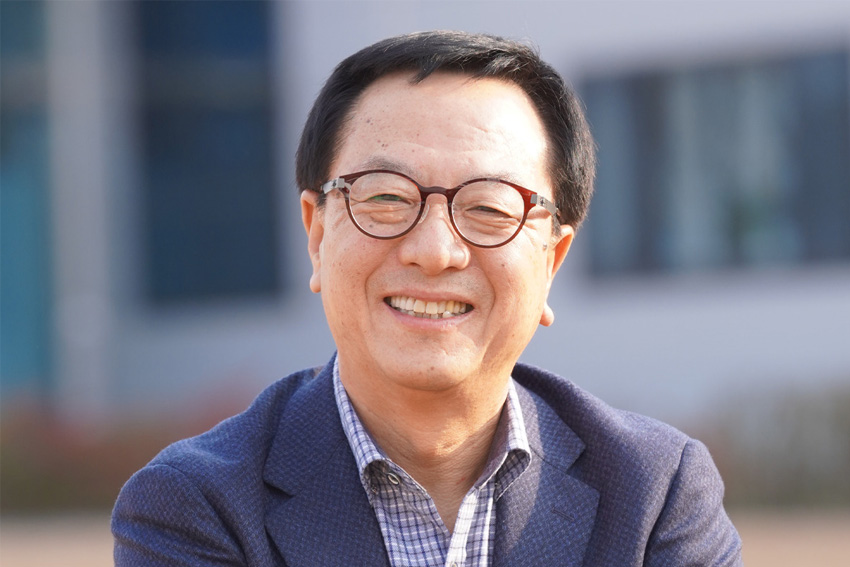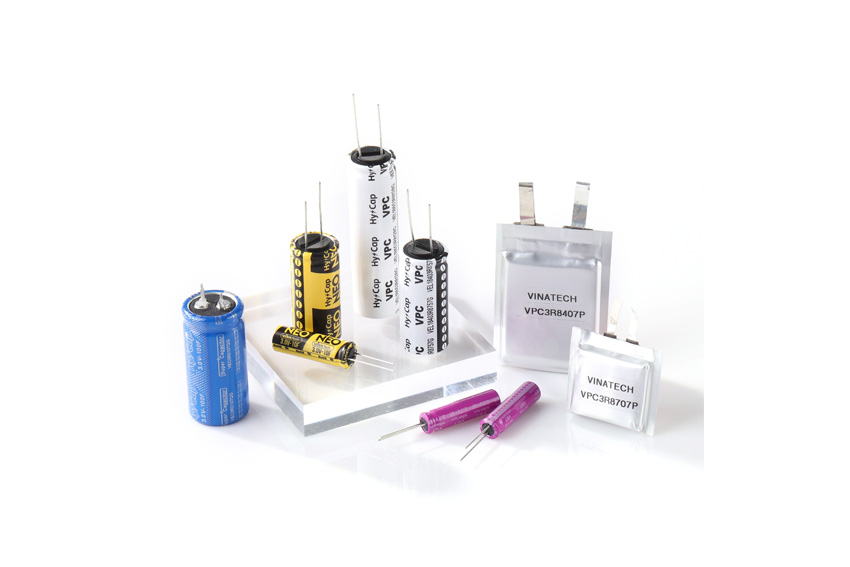Established in 1999, the Korean carbon specialist Vinatech heavily invests in R&D and facilities for tomorrow’s eco-friendly technologies. Through partnerships with major automotive actors, the company leads carbon technology to develop the next generation superconductors and fuel cell membranes.

The success of Korean conglomerates has had a positive trickle-down effect on domestic suppliers, providing them with growth momentum and core capabilities. However, in recent times, due to an increasingly saturated and competitive domestic landscape, it has become essential for enterprises to think globally to continue their growth trajectories. In order to achieve this goal, Korean companies will need to find their place in the global supply chain. What opportunities currently exist for companies like yours in the international market? How do you plan to position yourself to gain an advantage over China in terms of international market share?
With the ongoing tension between China and the US, which shows no signs of abating, I believe this dynamic will persist indefinitely. This presents a tremendous opportunity for Korean SMEs, particularly those engaged in export. China's cost-effectiveness is unmatched, making it challenging for us to compete. On top of that, with China's government providing strong support and their technological capabilities advancing rapidly, they are now on par with Korea. Given the ongoing hegemonic struggle between China and the US, it's unlikely they will remain aligned indefinitely. If this tension continues, China's dominance in the global market will likely wane. Consequently, Chinese supercapacitors and fuel cells may experience significant delays in market domination.
With the EV revolution gaining momentum, we observe the Biden administration advocating for the mainstream adoption of EVs in the US, a trend mirrored in Europe. How do you envision the trajectory of green energy amidst the global shift towards a carbon-neutral society?
s environmental challenges escalate, I foresee an increased prioritization of the green energy transition. For automakers, we anticipate smaller vehicles transitioning to battery power, ultimately becoming EVs. Conversely, larger commercial vehicles such as heavy-duty trucks are likely to rely on hydrogen fuel in the future. Realistically, we estimate another decade before Fuel Cell Electric Vehicles (FCEVs) reach full commercialization due to cost, storage, and transportation constraints. However, history has shown humanity's ability to address crises sequentially, indicating an eventual pivot towards FCEVs. I predict that within the next 50 years, FCEVs will emerge as the mainstream solution.
Super capacitors are recognized as vital technology for enabling renewable energy, including wind and hydraulic power. While hydrogen is primarily associated with mobility, it also offers a promising alternative. How crucial are supercapacitors and hydrogen technologies in diversifying the energy mix, particularly in regions like Europe and the US?
We're still in the early stages of supercapacitors and fuel cells, but I anticipate significant growth ahead. As gasoline reserves dwindle, our alternatives narrow down to fuel cells or batteries. However, batteries face challenges such as explosion risks, depletion of rare earth materials, and high recycling costs. Looking ahead, batteries will likely be followed by hydrogen as the preferred option. When considering electric vehicles (EVs), vessels, or airplanes, they predominantly rely on batteries, which serve as energy devices rather than power devices. Thus, there's a need to integrate supercapacitors as power devices alongside batteries. This applies to Fuel Cell Electric Vehicles (FCEVs) as well, if you replace a supercapacitor that has a much higher output than a battery, you will have higher efficiency such as output and fuel efficiency.
Now, hydrogen is once again gaining attention in the West. Do you believe hydrogen is a more practical energy or power source compared to lithium-ion batteries as we look ahead?
I anticipate the hydrogen era to arrive much later, likely not until 2050. This extended timeline is due to significant challenges related to cost, logistics, and storage. Only when these obstacles are effectively addressed can we expect the widespread adoption of hydrogen as a viable energy source.
Established in 1999, Vinatech has emerged as a prominent global player in supercapacitors. Recognizing hydrogen's potential for fostering a sustainable society, Vinatech embarked on developing solutions for both stationary and mobile fuel cells in 2013. From my understanding, Vinatech positions itself as a comprehensive provider of energy solutions. Could you share your perspective on Vinatech's identity?
There's a lesser-known aspect about our work: both supercapacitors and hydrogen fuel cells rely heavily on carbon as a key material. Supercapacitors require activated carbon, while hydrogen fuel cells utilize various types of carbons. Leveraging our focus and expertise in carbon production, we've made substantial investments in carbon research and development. We manufacture the majority of carbon components for H company (Global automobile manufacturer), and our reputation for unparalleled durability, performance, and competitive pricing has attracted top-tier global companies seeking key components for FCEV hydrogen fuel cells. Our future endeavors will include stacks for hydrogen fuel cells and power packs for hydrogen-powered vehicles. This expansion is evident in the increasing number of client orders. Additionally, we're exploring opportunities in Membrane Electrode Assemblies (MEA) for hydro-electrolysis. Our business model can be broadly categorized into two areas: a fusion of hydrogen fuel cells and supercapacitors, and a combination of batteries and supercapacitors. The power solution business division focused on the above items was established five years ago and is successfully expanding its business.
Vinatech internally manufactures crucial fuel cell components such as carbon support, catalysts, and Membrane Electrode Assemblies (MEAs), harnessing its Carbon Control Technology to optimize performance and structure. This approach results in increased surface area and minimized interlayer defects. Could you provide further insights into the advantages offered by Vinatech's materials in fuel cell component production?
When it comes to hydrogen fuel cells, our key strengths lie in heightened durability, translating to extended mileage, and enhanced cost-effectiveness. We achieve cost reduction by utilizing less platinum or substituting it with alternative materials. As for supercapacitors, our products are not off-the-shelf; we possess the capability to tailor and refine quality to meet specific requirements.
When it comes to developing and manipulating carbons, reducing the cost of carbon nanofibers presented a significant challenge. However, from your explanation, it's evident that you've succeeded in developing high-quality, safe, and cost-effective carbon technologies. Could you elaborate on how you've achieved this?
Carbon has always been a crucial tool for problem-solving, and among its various forms, carbon nanofibers emerged as possessing the ideal properties for carbon support. Recognizing this, we focused on optimizing carbon for hydrogen fuel cells, ultimately becoming specialists in carbon manipulation to meet diverse needs. Our company's greatest strength lies in our mastery of carbon control.
You mentioned the goal of reducing or even eliminating platinum from the proton exchange membrane, a significant challenge due to its contribution to the cost and complexity of fuel cells. What is the current status of this endeavor? Could you provide insights into your latest innovations?
To mitigate the cost associated with platinum, we're exploring alternative metal technologies and core-shell catalysts. Additionally, to maximize usage efficiency, we're investigating optimal methods for employing and distributing ionomers. While much of the internal R&D is conducted in-house, we're also seeking external partnerships for ionomer technology to ensure unparalleled platinum cost efficiency in the future. Our current target for reduction is to achieve a 75% reduction rate.
Supercapacitors still face challenges in cost-effectiveness, especially in hybrid applications. Your VPC series and EDLC supercapacitors have demonstrated cost reduction capabilities. Could you elaborate on your technology and how your expertise in carbon has facilitated advancements in current supercapacitor technology?
When considering the challenges faced by batteries in EVs, such as initial start-up, sudden acceleration, and extreme weather conditions, supercapacitors emerge as a potential solution. Over the past seven years, we've partnered with H company (Global automobile manufacturer) to develop FCEVs equipped with supercapacitors, specifically targeting these issues. Two years ago, we successfully conducted a demonstration test where we replaced batteries with supercapacitors in a total system setup. However, the main obstacle to mass producing these cars lies in pricing. Since EV batteries typically require replacement every 3-5 years, while supercapacitors can last over a decade, the performance of supercapacitors may degrade over time. Consequently, we are focused on reducing the cost of supercapacitor-equipped EVs, considering their longer lifespan.
Furthermore, in Frequency Regulation Energy Storage System(FR-ESS) applications, the frequency varies, posing challenges to battery performance. By utilizing both supercapacitors and batteries, we can address instant power requirements with supercapacitors, thus reducing flammability risk and extending lifespan by 2.5 times. Over the past three years, we've collaborated with the Korea Electric Power Research Institute on developing this technology, and we anticipate test results to be available next month.

Supercapacitors
Commercializing such technology, especially in your field, can pose significant challenges. In the international market, there are well-established. How do you perceive the technological competitiveness of your products against theirs, and what would you identify as the key competitive advantage of your technology?
Our distinct competitive advantage lies in our Carbon Control Technology, electrode creation techniques, and our unmatched structures and designs. In the U.S., our major clients include B company(Comprehensive software solutions provider) and L company (the leading smart meter manufacturer globally). Similarly, we supply to M company (Global automotive and commercial vehicle manufacturer) in the European market, providing 100% of the components for these clients. Our focus remains on mass production with cost-effectiveness, recognizing that cost, quality, and delivery time are paramount. To address cost concerns, we've established a plant in Vietnam, and we're in the process of constructing additional facilities for pouch-type or cylindrical-type production. With these foundations, we aim to penetrate the European and Indian markets.
My main concern is competition with Chinese competitors, known for their unparalleled cost-effectiveness, and with a major competitor that has technological capabilities. However, I'm confident in our ability to navigate competition in the market.
While Vinatech reported financial results of 55 billion KRW in 2023, the company aims to achieve 1 trillion won in revenue by 2030. What do you perceive as the most significant challenges in reaching this target, and what assets do you believe are crucial for achieving this goal?
To provide accurate context, our revenue was 70 billion KRW in 2022, slightly dipping to 55 billion KRW in 2023 due to issues with S company(Global semiconductor and electronics manufacturer)'s eco-friendly remote controller. However, this year, we're striving to reach 80 billion KRW.
Our company's roadmap is as follows: Up until 2022, our focus was on Electric Double-Layer Capacitors (EDLC), with recent emphasis on Lithium-ion Capacitors (LIC) and Vinatech Power Capacitors (VPC). For our second plant, we aim to produce pouch-type capacitors, and for the third, we plan to manufacture 46-pi & 60-pi diameter units. Our future ventures will extend to Energy Storage Systems (ESS), electronic components, trams, logistics, home appliances, and defense sectors, where we will supply modules and systems.
In the fuel cell domain, 2024 marks the inaugural year of profitability for our hydrogen fuel cell segment, positioning us as the first company to achieve surplus. Our fuel cell strategy encompasses Membrane Electrode Assemblies (MEA) and carbon support, with future expansion into stacks, power packs, and supercapacitors. Over the years, we've established partnerships with B company (Leading automotive and industrial technology) with a recent agreement signed with M Company (Global industrial large engine manufacturer). Our collaboration B company spans seven to eight years. Our new ventures will encompass buildings, power generation, marine, and defense sectors.
Regarding safety concerns, incidents like Tesla car accidents highlight the potential hazards associated with battery-powered vehicles. In Korea, we offer safety products within car interiors designed to break windows, enabling drivers to escape such situations. I believe these accidents underscore the importance of replacing batteries with supercapacitors applied to e-latch, which cost approximately 30,000 KRW per unit, to mitigate explosion risks. We've been supplying supercapacitors to M company (Global automotive and commercial vehicle manufacturer) through a Germany-based company for safety systems like airbags for the past 10 to 15 years.
For more details, explore their website at https://www.vinatech.com/kr/
0 COMMENTS